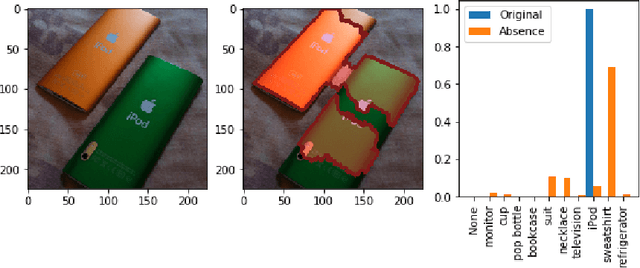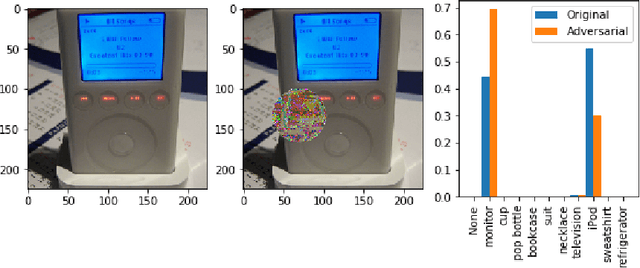Stanislav Bochkarev
Do Explanations Reflect Decisions? A Machine-centric Strategy to Quantify the Performance of Explainability Algorithms
Oct 29, 2019



Abstract:There has been a significant surge of interest recently around the concept of explainable artificial intelligence (XAI), where the goal is to produce an interpretation for a decision made by a machine learning algorithm. Of particular interest is the interpretation of how deep neural networks make decisions, given the complexity and `black box' nature of such networks. Given the infancy of the field, there has been very limited exploration into the assessment of the performance of explainability methods, with most evaluations centered around subjective visual interpretation of the produced interpretations. In this study, we explore a more machine-centric strategy for quantifying the performance of explainability methods on deep neural networks via the notion of decision-making impact analysis. We introduce two quantitative performance metrics: i) Impact Score, which assesses the percentage of critical factors with either strong confidence reduction impact or decision changing impact, and ii) Impact Coverage, which assesses the percentage coverage of adversarially impacted factors in the input. A comprehensive analysis using this approach was conducted on several state-of-the-art explainability methods (LIME, SHAP, Expected Gradients, GSInquire) on a ResNet-50 deep convolutional neural network using a subset of ImageNet for the task of image classification. Experimental results show that the critical regions identified by LIME within the tested images had the lowest impact on the decision-making process of the network (~38%), with progressive increase in decision-making impact for SHAP (~44%), Expected Gradients (~51%), and GSInquire (~76%). While by no means perfect, the hope is that the proposed machine-centric strategy helps push the conversation forward towards better metrics for evaluating explainability methods and improve trust in deep neural networks.
Human-Machine Collaborative Design for Accelerated Design of Compact Deep Neural Networks for Autonomous Driving
Sep 12, 2019



Abstract:An effective deep learning development process is critical for widespread industrial adoption, particularly in the automotive sector. A typical industrial deep learning development cycle involves customizing and re-designing an off-the-shelf network architecture to meet the operational requirements of the target application, leading to considerable trial and error work by a machine learning practitioner. This approach greatly impedes development with a long turnaround time and the unsatisfactory quality of the created models. As a result, a development platform that can aid engineers in greatly accelerating the design and production of compact, optimized deep neural networks is highly desirable. In this joint industrial case study, we study the efficacy of the GenSynth AI-assisted AI design platform for accelerating the design of custom, optimized deep neural networks for autonomous driving through human-machine collaborative design. We perform a quantitative examination by evaluating 10 different compact deep neural networks produced by GenSynth for the purpose of object detection via a NASNet-based user network prototype design, targeted at a low-cost GPU-based accelerated embedded system. Furthermore, we quantitatively assess the talent hours and GPU processing hours used by the GenSynth process and three other approaches based on the typical industrial development process. In addition, we quantify the annual cloud cost savings for comprehensive testing using networks produced by GenSynth. Finally, we assess the usability and merits of the GenSynth process through user feedback. The findings of this case study showed that GenSynth is easy to use and can be effective at accelerating the design and production of compact, customized deep neural network.
 Add to Chrome
Add to Chrome Add to Firefox
Add to Firefox Add to Edge
Add to Edge